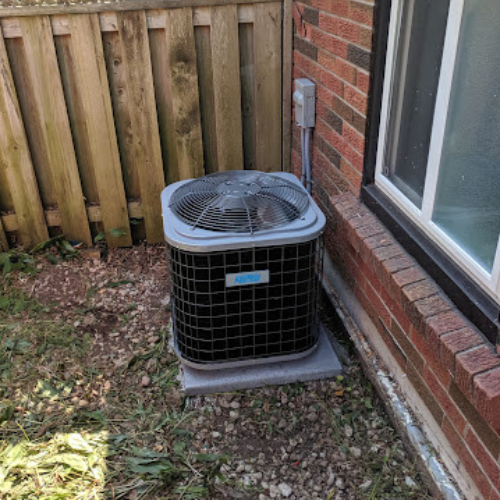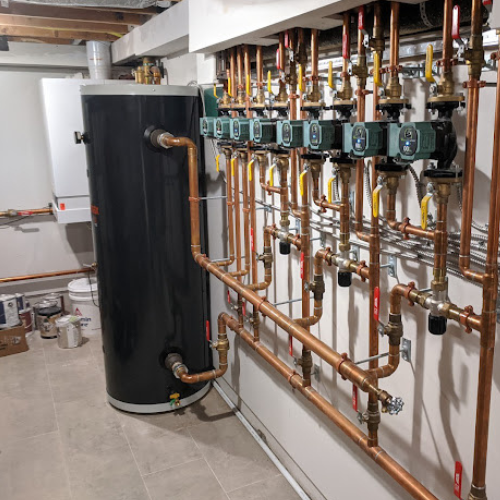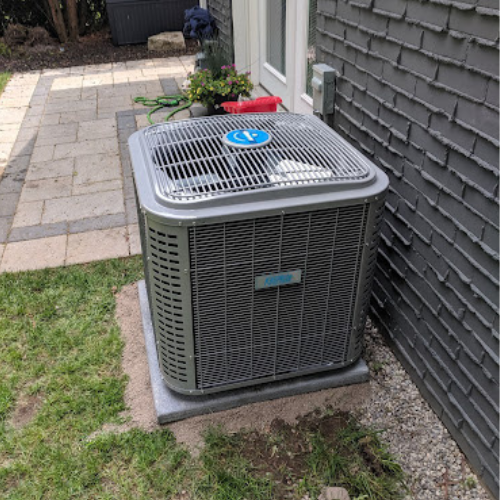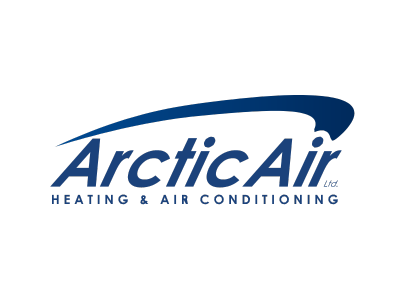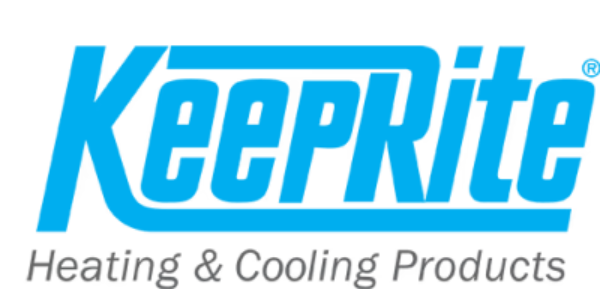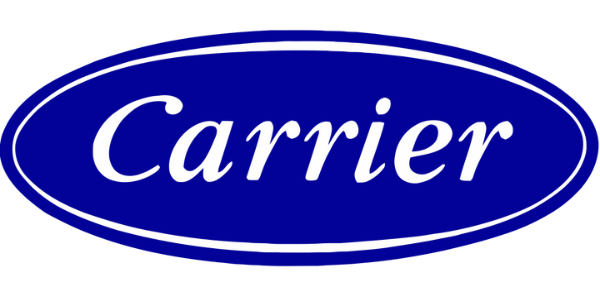See If You Qualify For Our Seasonal Coupons!
905-483-8090
SCHEDULE WITH US ONLINE
905-483-8090
See If You Qualify For Our Seasonal Coupons!
Frequently Asked Questions
How often should I check my furnace filter?
We suggest checking your furnace filter monthly. If you have a disposable type filter, (these usually have a cardboard edge), and if it is dirty, just replace it. Don't attempt to clean it. Some higher efficiency 1" pleated air filters can go up to three months before needing replacement. But in the higher-use seasons, it's better to check more often.
What does the MERV rating on my air filter mean?
MERV stands for Minimum Efficiency Reporting Value. MERV rating, is a measurement scale designed in 1987 by the American Society of Heating, Refrigerating and Air-Conditioning Engineers (ASHRAE) to rate the effectiveness of air filters. The MERV rating is from 1 to 16. The higher the MERV rating the more efficient your filter is at capturing dust, pollen, mold etc.
Why is there ice built up on my A/C unit?
Ice built up on your A/C unit is caused by 1 of 2 factors or a combination of both.
1. Low Refrigerant: Weak solder joints, friction from piping rubbing or vibrating against an object, leaking valves or loose fittings can cause leaks. Depending on your systems age and the type and location of the leak Arctic Air will determine whether to have the system repaired or replaced.
2. Inadequate Air Flow across your A/C coil: Ensure your air filter is clean. If it is dirty replaceit with a new one and turn your cooling system off. Turn your Fan to on and let the ice melt.Once the ice is melted you can turn your cooling system back on. If the freezing problemcontinues contact Arctic Air for a diagnosis of the problem.
How long does a central air conditioner and furnace typically last?
The lifespan for an air conditioner and a furnace is anywhere between 15 to 20 years. Numerous factors can influence how long your system will last. The number 1 factor that will prolong your system is regular maintenance. Please see our maintenance tab on our home page for more information.
What does the Seer rating on my A/C mean?
Seer rating stands for Seasonal Energy Efficiency Ratio. It tells you how efficient your A/System is. The higher the number the more efficient the unit is. Many older systems have SEER ratings of 6 or less. The minimum SEER allowed today is 13. Look for the ENERGY STAR® label for central air conditioners with SEER ratings of 13 or greater.
Will a Two-Stage Furnace Lower Your Energy Bills?
Short answer is yes. It will not only lower your energy bill but it will make the living space more comfortable by preventing noticeable temperature swings in your home. Single Stage furnaces always run at 100% of their capacity. This includes heat output and blower speeds. Two Stage furnaces are capable of running at 60% of their capacity most of the time and only run at 100%on the coldest of days of the year. Two Stage furnaces can make a significant difference in both comfort and efficiency during the "shoulder seasons", spring and fall, when the demand for heats less.
What is a Variable Speed Furnace and what are some of the advantages?
The term “variable speed” refers to the furnace’s indoor blower motor, which moves at different speeds to precisely control the flow of heated and cooled air throughout your home. Better airflow control has several benefits which include: Reduction in electricity consumption, less fan noise, improved humidity control, continual air filtering, improved temperature stability, greater year-round comfort.
What should I keep my humidity set to in the winter?
The correct humidity setting changes, based on the outdoor temperature. As it gets colder outside, you need to reduce indoor humidity or your windows will start condensing. A good rule of thumb is, if you see moisture building up on your windows, you have too much humidity and you need to turn down your humidistat or ventilate your home by running your bathroom exhaust fans for a period of time.
Need An Inspection Or Service?
Schedule With Us
Frequently Asked Questions
How often should I check my furnace filter?
We suggest checking your furnace filter monthly. If you have a disposable type filter, (these usually have a cardboard edge), and if it is dirty, just replace it. Don't attempt to clean it. Some higher efficiency 1" pleated air filters can go up to three months before needing replacement. But in the higher-use seasons, it's better to check more often.
What does the MERV rating on my air filter mean?
MERV stands for Minimum Efficiency Reporting Value. MERV rating, is a measurement scale designed in 1987 by the American Society of Heating, Refrigerating and Air-Conditioning Engineers (ASHRAE) to rate the effectiveness of air filters. The MERV rating is from 1 to 16. The higher the MERV rating the more efficient your filter is at capturing dust, pollen, mold etc.
Why is there ice built up on my A/C unit?
Ice built up on your A/C unit is caused by 1 of 2 factors or a combination of both.
1. Low Refrigerant: Weak solder joints, friction from piping rubbing or vibrating against an object, leaking valves or loose fittings can cause leaks. Depending on your systems age and the type and location of the leak Arctic Air will determine whether to have the system repaired or replaced.
2. Inadequate Air Flow across your A/C coil: Ensure your air filter is clean. If it is dirty replaceit with a new one and turn your cooling system off. Turn your Fan to on and let the ice melt.Once the ice is melted you can turn your cooling system back on. If the freezing problemcontinues contact Arctic Air for a diagnosis of the problem.
How long does a central air conditioner and furnace typically last?
The lifespan for an air conditioner and a furnace is anywhere between 15 to 20 years. Numerous factors can influence how long your system will last. The number 1 factor that will prolong your system is regular maintenance. Please see our maintenance tab on our home page for more information.
What does the Seer rating on my A/C mean?
Seer rating stands for Seasonal Energy Efficiency Ratio. It tells you how efficient your A/System is. The higher the number the more efficient the unit is. Many older systems have SEER ratings of 6 or less. The minimum SEER allowed today is 13. Look for the ENERGY STAR® label for central air conditioners with SEER ratings of 13 or greater.
Will a Two-Stage Furnace Lower Your Energy Bills?
Short answer is yes. It will not only lower your energy bill but it will make the living space more comfortable by preventing noticeable temperature swings in your home. Single Stage furnaces always run at 100% of their capacity. This includes heat output and blower speeds. Two Stage furnaces are capable of running at 60% of their capacity most of the time and only run at 100%on the coldest of days of the year. Two Stage furnaces can make a significant difference in both comfort and efficiency during the "shoulder seasons", spring and fall, when the demand for heats less.
What is a Variable Speed Furnace and what are some of the advantages?
The term “variable speed” refers to the furnace’s indoor blower motor, which moves at different speeds to precisely control the flow of heated and cooled air throughout your home. Better airflow control has several benefits which include: Reduction in electricity consumption, less fan noise, improved humidity control, continual air filtering, improved temperature stability, greater year-round comfort.
What should I keep my humidity set to in the winter?
The correct humidity setting changes, based on the outdoor temperature. As it gets colder outside, you need to reduce indoor humidity or your windows will start condensing. A good rule of thumb is, if you see moisture building up on your windows, you have too much humidity and you need to turn down your humidistat or ventilate your home by running your bathroom exhaust fans for a period of time.
Need An Inspection Or Service?
Schedule With Us
Customer Reviews
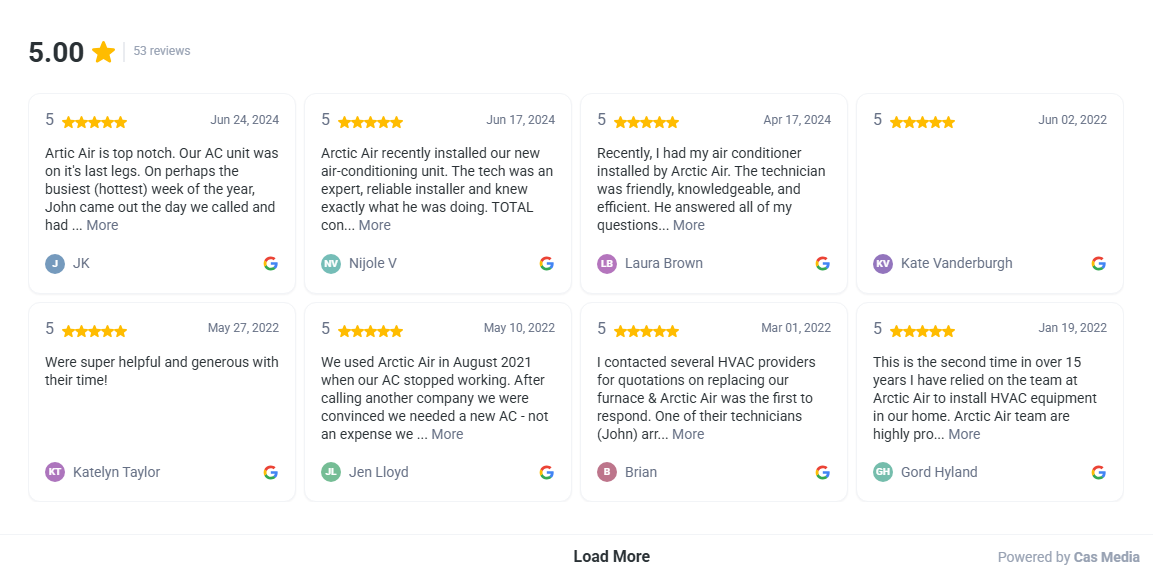
Our Recent Projects

